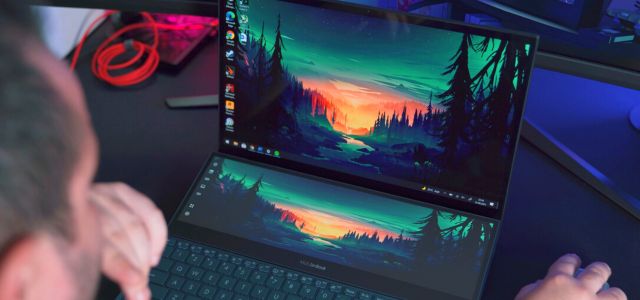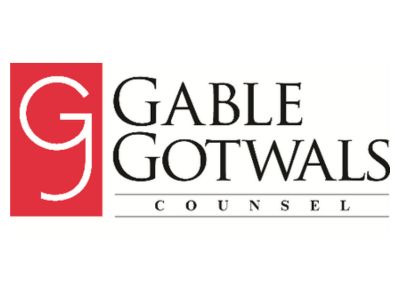Lenovo has sued ASUS TeK in the Northern District of California (23-CV-5892), alleging ASUS’ Zenbook Pro laptop infringes four of Lenovo’s patents: a rotatable hinge (US Patent No. 8,687,354), diagonal touchpad scrolling (7,760,189), a wireless wake feature (7,792,066), and a method to improve the efficiency of wireless uplinks (10,952,203).
IT message boards have expressed outrage, mostly at the Patent Office, for granting protections on this “familiar” technology. Others see a David-and-Goliath story, with “tiny” Taiwanese ASUS against “giant” Chinese aggressor Lenovo. As usual, the truth is more subtle and mysterious.
Firstly, there is no underdog. ASUS made $500 billion in 2022. Lenovo made $70 billion. Both sides can pay their attorneys. Secondly, some of the technologies are old. The wireless wake patent claimed a 2003 priority date. This patent and the diagonal scrolling patent will expire soon. “Patented” is not a synonym for “cutting-edge.”
More interesting are Lenovo’s patents and pleadings. For example, Lenovo’s diagonal scrolling patent has three elements:
- Counting fingers on a touchpad
- Entering a diagonal scroll mode for more than one finger
- Diagonal scrolling.
If the patent is valid, ASUS must practice all three steps to infringe. Under Coop. Ent., Lenovo needn’t plead every element at this early stage but how will they argue the middle step? What exactly is a diagonal scroll mode? And how are the patented three steps different from a two-step method of (1) detecting two fingers and (2) executing the scroll? The “mode” has to mean something.
Fortunately for Lenovo, Markman hearings don’t typically construe computer “modes” narrowly, say, as means-plus-function language under 35 USC 112(f), which would limit the claim to whatever examples of modes happen to appear in the disclosure. In Motorola v. Analog Devices, a court distinguished between a computer’s “master mode” (taking instructions from the CPU) and “slave mode” (taking instructions from an external source) without reference to 112(f). Still, the patent gives little indication of what qualifies as a mode and, to keep up the litigation, Lenovo will eventually have to say how the Zenbook Pro enters such a mode. I await the arguments from both sides.
Also curious is the wireless uplink patent, which purports to solve a problem with cellular LTE network delays due to scheduling requests. A device with the patented technology can, without requesting it, receive permission from the network to send information at assigned frequencies and times (“resource blocks”). LTE was designed with this kind of efficiency in mind, so Lenovo had to claim narrowly to obtain the patent. It was even amended to require the user device to count its resource blocks. So, at first glance, the patent seems small and vulnerable.
Even more curious, Lenovo doesn’t seek to assert the wireless uplink patent against an LTE device but rather against the Zenbook’s Wi-Fi 6 compatibility. Lenovo argues that ASUS infringes because its computers use Wi-Fi 6, and any unlicensed Wi-Fi 6 device infringes. Indeed, Lenovo’s whole argument focuses not on ASUS’ laptop but on the Institute of Electrical and Electronics Engineers (IEEE) standard for Wi-Fi 6 (poetically termed “802.11ax”). This is intriguing because, if Lenovo is correct, it may have a standard essential patent (SEP). But if Lenovo believes it has an SEP, why isn’t it listed on IEEE’s record SEPs?
Finally, it is unclear whether the IEEE standard uses Lenovo’s technology. First, the patent language employs the LTE-specific terminology of “resource blocks,” but the Wi-Fi 6 standard discusses “resource units,” which, if I follow, are not equivalent. Second, Lenovo’s patent pertains to a user device, not the network, Wi-Fi 6 focuses on networks. For example, in the patent, a user device counts resources allocated to it but, in the alleged-equivalent step of IEEE standard, the network does the counting. So it isn’t obvious that all Wi-Fi 6 devices must practice Lenovo’s technology. Again, I’ll be watching to see where this is headed.

Written by Christopher Shrock
Associate, GableGotwals
You may also like…
Welcome to Hangzhou! The AIPPI World Congress 2024
AIPPI World Congress 2024 opened its doors in Hangzhou, China, on Saturday, 19 October. All attending were warmly...
Crystalizing plant variety infringement protection in India
On September 20, 2024, the Delhi High Court ruled in Pioneer Overseas Corporation v. M/s Evercrop Agro Science &...
German criminal court finds three defendants guilty of fraud for sending misleading invoices to EUIPO customers
In September 2024, the Munich Court (Germany) found three defendants guilty of commercial gang fraud for sending...
Contact us to write for out Newsletter














